
The region of western Crete abounds primarily in natural attractions. The most beautiful Cretan beaches, mountains, gorges are places attracting crowds of tourists and supporters of active leisure every year. On the other hand, lovers of history and excavations in this region do not have much to watch. In fact, apart from Aptera or excavations in Falassarna, there are no major archaeological sites here. Smaller traces of the past are of course spread all over the island, but in the western part you will not find magnificent Minoan palaces or villas. Therefore, archeology fans in this area of Crete should pay attention to the remains of ancient Polyrinia. Although it is one of the most interesting archaeological sites, it still remains little known among tourists.
Polyrinia (Polirinia, Polyrrhenia, Polirrinia) is located about 45 km west of Chania. To get here, head towards Kissamos, where at the beginning of the village you should look for a signpost for Polyrinia. After leaving the New National Road less than 8 km separating it from Kissamos you have to overcome a narrow winding road that climbs the surrounding hills.
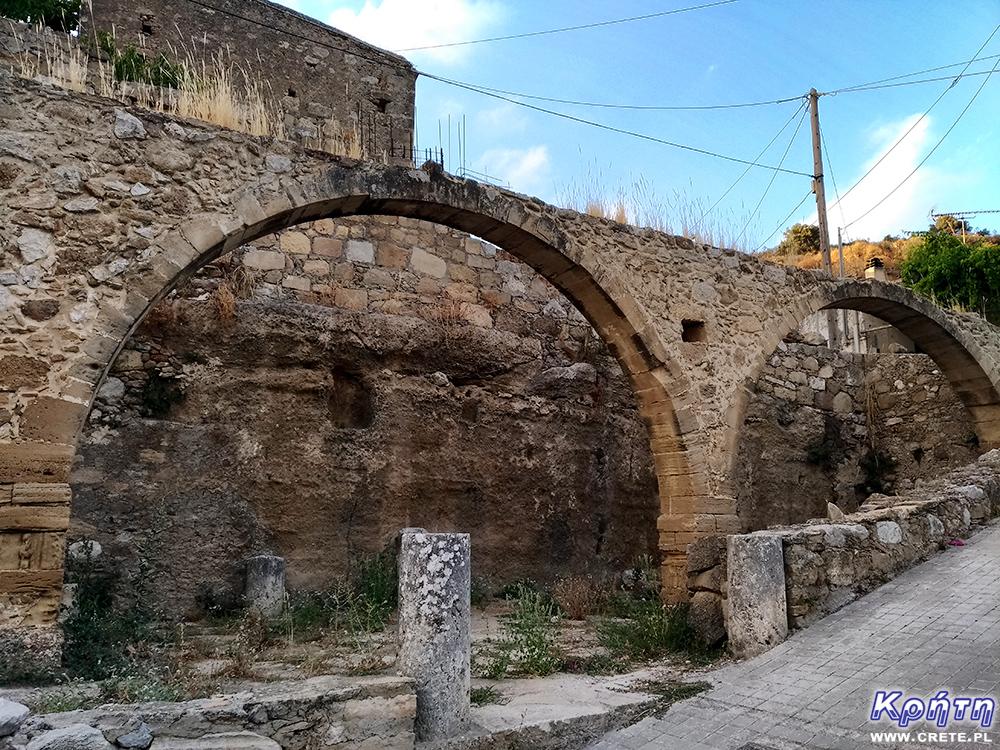 Roman aqueduct
Roman aqueduct
Polyrinia was one of the most important city-states of western Crete during the Hellenistic and Roman periods. It was built amphitheater on a steep hill, rising to a height of 481 meters above sea level. From its top there is an impressive view of the Cretan and Libyan Sea and the picturesque surroundings. The city was probably founded by the Achaeans in 1100 BC, and its full flowering occurred in the Roman period. It is worth noting that although the history of this place began in the Minoan period, it continues to this day. You won't find a magnificent city here, but only a calm and somewhat sleepy village, in which the remains of the former splendor of this place are woven.
Polyrinia was the most fortified city of ancient Crete that dominated the western part of the island. It developed close trade relations with Sparta, Milos, Rhodes, Thebes, the coast of ancient Ionia and Egypt. Ships with cargo docked at both Kissamos and the ancient Falassarna, as both of these places served as ports in Polyrinia. In addition to trade, the city was also known for breeding, some of its inhabitants engaged in shepherding. The name of the city indicates just such a direction of development, polla rinia means many lambs / sheep.
During the Roman invasion of Crete, when the city was conquered by the Romans, Polyrinia decided to paradoxically support its invaders. Thanks to this catwalk, the city was not destroyed. It is worth remembering that Gortyna adopted a similar tactic. Both cities gained position and privileges thanks to their support of the Romans.
The inhabitants of Polyrinia quickly erected a monument to the Roman conqueror of Crete, Quintus Metellus, while the Romans constructed a water supply system with an aqueduct and fountains in a newly conquered place. It was a gift for new allies from Emperor Hadrian.
Polyrinia, thanks to the new Roman allies, defeated its eternal rival, which was the most powerful city of western Crete: today's Chania, or then Kydonia. Undoubtedly, the takeover of the Sanctuary of Diktynna located on Cape Spatha on the nearby Rodopou Peninsula was an undoubted profit. Control over this place has always been a source of conflict between ancient Kydonia and Polyrinia. The proof of the importance of this sanctuary was a paved road with a length of 11 Roman miles, or over 16 km, connecting Diktinna with Polyrinia.
In its heyday, Polyrinia was very wealthy and powerful. From the 4th century to the Roman period, the city minted its own coins with the head of a bull on one side and the image of Zeus on the other. The bull's head motif also appeared in the city's coat of arms.
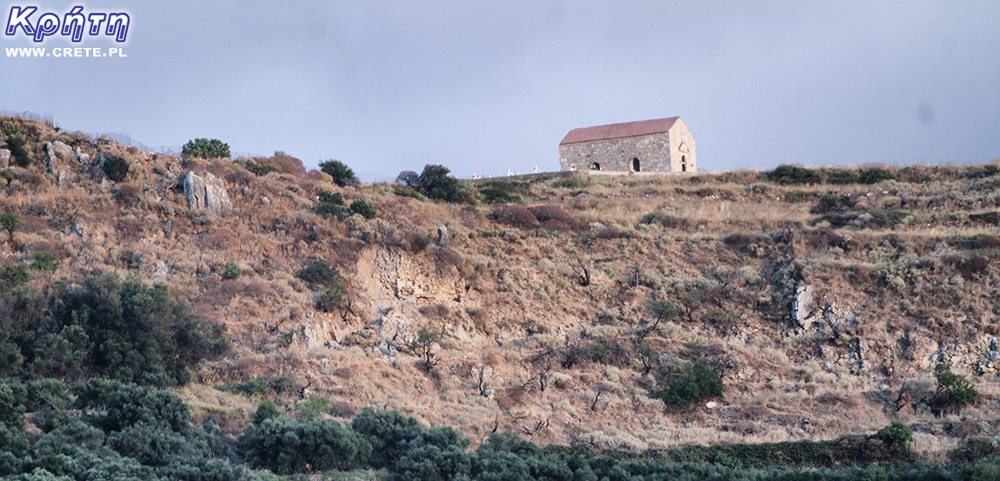 The hill on which Polyrynia is located
The hill on which Polyrynia is located
On the Polyrinia acropolis there was a temple dedicated to the goddess Artemis. Nowadays, the stones from this building were used to build the church of 99 Saints, which was built at the end of the 19th century in 1894 in the place where the temple of Artemis was built in ancient times.
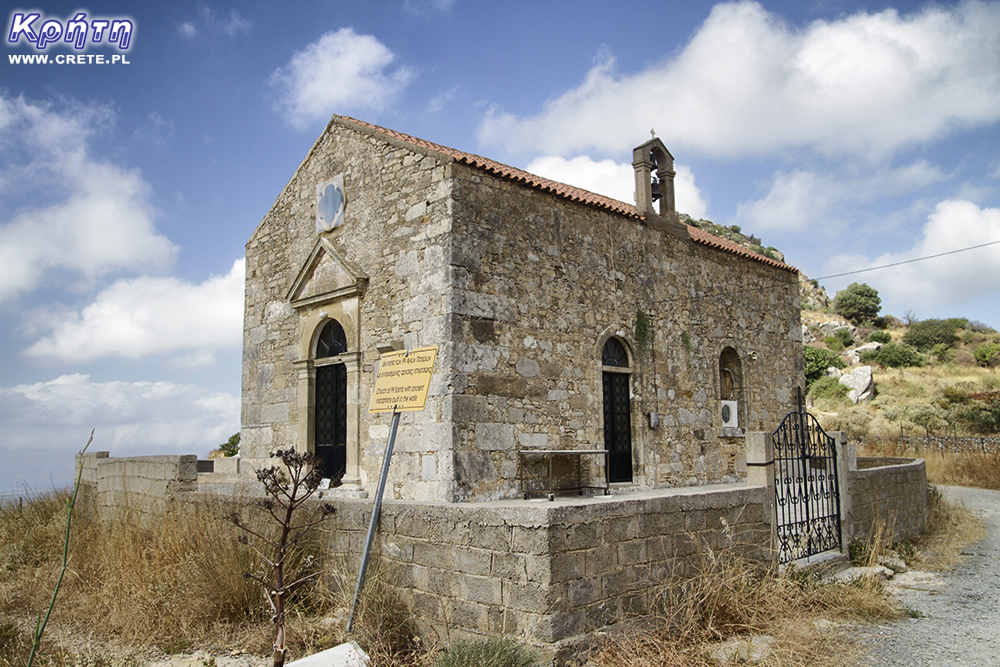 Church of 99 Saints
Church of 99 Saints
Stones with inscriptions, treatises and dedications were also used to build the church. But not only they were used to build a modern temple. An ancient altar, which is part of the eastern wall of a modern building, has also been used.
According to myths, winning Agamemnon, returning from the Trojan war, stopped in Polyrinia. His ships anchored in Honi (today's Nopigia), and he went to the temple of Artemis in Polyrinia to sacrifice to the gods there. During this ceremony, he saw his naval fleet burn on fire by prisoners of war. Agamemnon stopped making sacrifices to return to ships as soon as possible. The story "Cretan sacrifices " that refers to incomplete desires and goals has remained after this story.
From 1938, no excavations were carried out in Polyrinia. Thus, today's visible ruins are the highest "layer" dated to the Roman and Middle Ages.
The walls surrounding the top of the hill were built on top of the previous ones. They have been modified in each period and now have fragments representing Greek, Roman, Byzantine and Venetian techniques.
Located between vast hills, surrounded by sleepy villages and modern olive groves, Polyrinia not only stores the remains of ancient civilization, but also offers magnificent views of the Bay of Kissamos and the picturesque surroundings. That is why visiting this place is worth starting with climbing the former Acropolis.
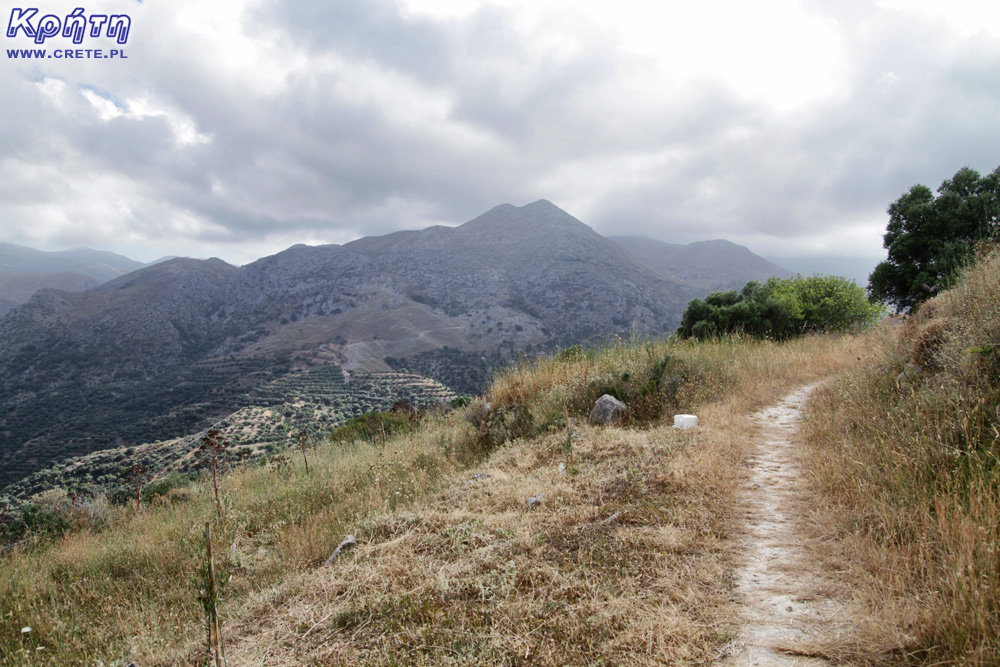 Lower fragment of the path leading to the Acropolis
Lower fragment of the path leading to the Acropolis
Following the signposts of Ancient Polyrrhenia Acropolis, you must first bypass the modern village and drive a bit on a steep road, passing the Acropolis tavern. You can leave your car nearby or drive further near the 99 Saints church and the church cemetery located here. Then go on foot along the path that slowly climbs up, winding initially along the southern and later the eastern part of the hill. Although the path has been clearly marked, it is now led between quite thick and sharp thickets. Unfortunately, after this trip, especially if you walk in shorts here, you will probably have scratched legs.
The path sometimes runs along the walls of the former city, and the higher you go, the more traces of the former city-state you will come across on your way. Going to the top of the hill you will pass a small chapel and the remains of Roman tanks. It is worth to be vigilant here because in its present form these old water tanks are simply large holes in the ground located next to the path.
Entering the top of the hill takes about 15-20 minutes, being at the very top is worth looking around because the views are really impressive.
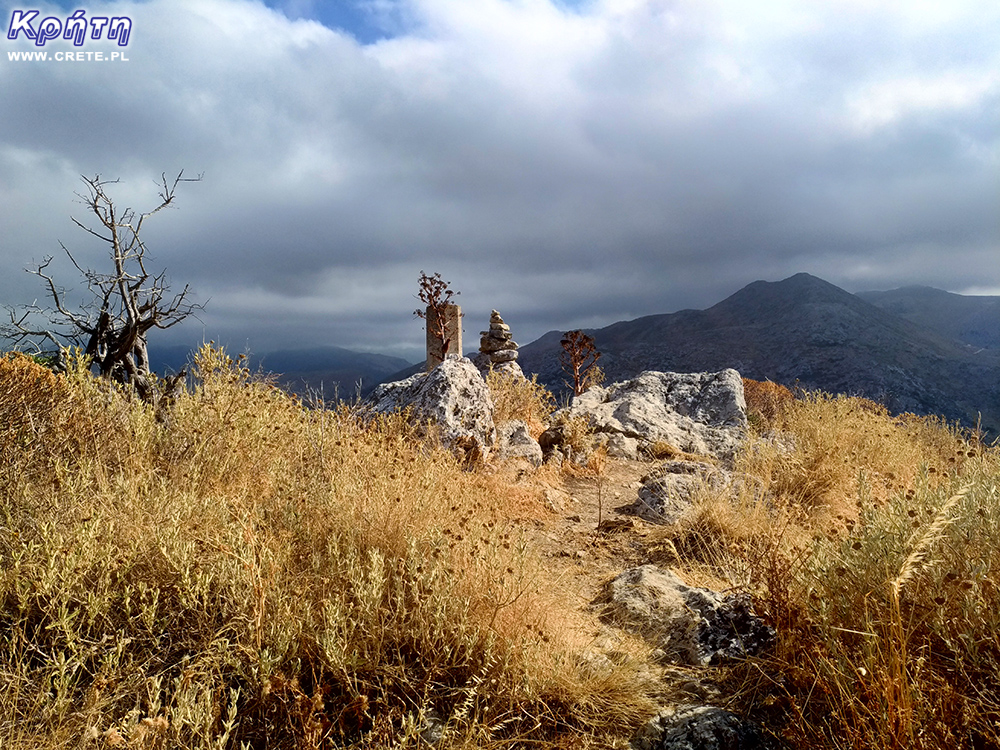 Ancient acropolis
Ancient acropolis
On the hill are the remains of the ancient Acropolis and Byzantine fort. Parts of the defensive walls reinforced with towers have survived to this day. On the eastern side of the fortifications there is an arched gate, which was one of the secondary entrances to the city.
In the city itself there were characteristic rock-carved houses and they have survived to our times. They can be seen in today's Polyrinia.
After leaving the Acropolis, it is necessary to go down or go down to the modern village. Signs and signposts placed here lead to the most interesting historical places.
The most important of them include, first of all, the remains of a Roman aqueduct. The aqueduct, along with rock-carved tankers, built in different places on the hill, collected water and distributed it around the city. He provided water supply not only to residents, but also supplied public fountains. Water supply was regulated by a movable dam, and any excess water was directed to a tank dug in the rock.
One of the main tunnels of the aqueduct is located at the bottom of the modern settlement, near the semicircular tower, to which it is connected by a special channel passing through the foundations. This combination had tactical significance, because during a possible siege you could protect the water reserves. This architectural complex of fortifications and water supply facilities was a major technological achievement. Interestingly, this ancient water supply system supposedly works effectively to this day.
Other interesting places that are worth paying attention to are the building with Venetian arches, a nice small stone church of the Assumption of the Virgin Mary, and outside the village the already mentioned church of 99 Fathers erected on the site of the former temple of Artemis. In addition to watching historical remains, it is also worth paying attention to the village itself, which is full of charming nooks.
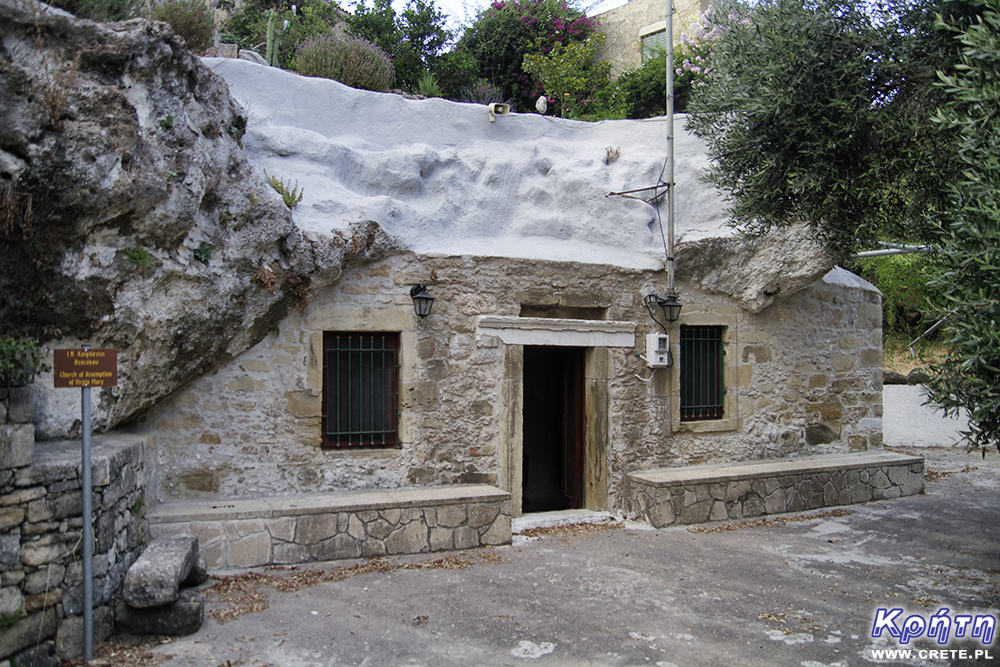 Church of the Assumption of the Blessed Virgin Mary
Church of the Assumption of the Blessed Virgin Mary
Near the road leading to the Sirikari Gorge is the cemetery of ancient Polyrinia, where there are tombs carved in the rock. A steep, narrow dirt road leads there, so if you also want to see this place, it is best to go on foot.
At the end of the tour, it is worth going to the Acropolis tavern, which you pass by at the beginning. You won't find such delicious home-made Cretan cuisine as the owners here.
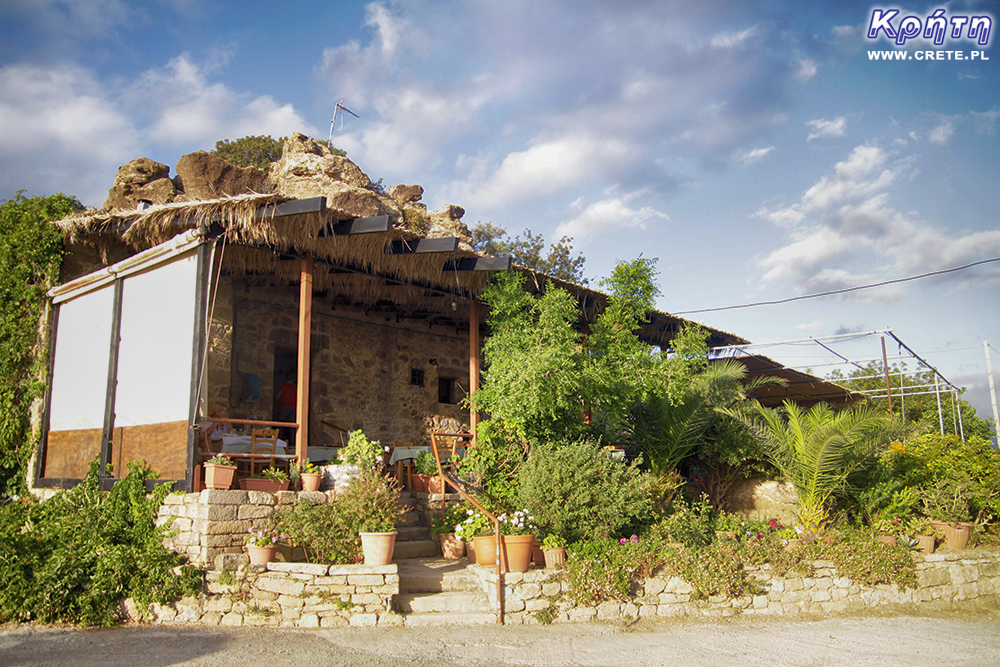 Acropolis Tavern
Acropolis Tavern
↤ click the appropriate part of the island to change the bottom map
W 2002 roku Falasarna zdobyła tytuł najlepszej plaży w Grecji. Wyróżnienie to nie jest bynajmniej przypadkowe, gdyż miejsce to jak na standardy Krety jest naprawdę unikalne.
Elafonisi is a small island located at the end of the southwestern edge of Crete. A characteristic feature of Elafonisi is the shallow lagoon connecting it with Crete.
Elafonisi is a small island located at the end of the southwestern edge of Crete. A characteristic feature of Elafonisi is the shallow lagoon connecting it with Crete.
This is the second largest airport (IATA code: CHQ) in Crete. In 2010, the airport in Chania served a total of over 1.65 million passengers.
Chania (Χανιά) is the second largest (after Heraklion) city of Crete. The biggest advantage of Chania is the area of the Old Town and the beautiful Venetian Harbor.
Aptera is a city whose history dates back to at least a thousand years before our era. In the peak period, about 20,000 lived in it. people, of which only 1/5 were free people.
Chania (Χανιά) is the second largest (after Heraklion) city of Crete. The biggest advantage of Chania is the area of the Old Town and the beautiful Venetian Harbor.
The genesis of the name of this poviat will not surprise anybody who will break the road from the Imbros gorge to Hora Sfakion.
Frangokastello is a small fortress that was built by the Venetians over four years from 1371. Initially, the castle was named after Saint Nikitas.
(Χρυσοσκαλίτισσα) The Church of the Blessed Virgin Mary with the Golden Step from the 17th century is the westernmost church building of this type.
(Χρυσοσκαλίτισσα) The Church of the Blessed Virgin Mary with the Golden Step from the 17th century is the westernmost church building of this type.
Omalos is a perfect starting point for exploring the Samaria Gorge. Located over 1,100 m above sea level extends over an area of 25 km2. Its size corresponds more or less to the size of the Lasithi Plateau.
Located 47 km from the city of Chania, it is the only freshwater lake in Crete. Its area is about 580 thousand. sqm. and the maximum depth is about 45 meters
Omalos is a perfect starting point for exploring the Samaria Gorge. Located over 1,100 m above sea level extends over an area of 25 km2. Its size corresponds more or less to the size of the Lasithi Plateau.
The steel crossing, which in the central part is separated from the ground by nearly 150 m, is at the leading position of the places where the longest bungee jumps are made.
Chania (Χανιά) is the second largest (after Heraklion) city of Crete. The biggest advantage of Chania is the area of the Old Town and the beautiful Venetian Harbor.
The genesis of the name of this poviat will not surprise anybody who will break the road from the Imbros gorge to Hora Sfakion. Word
This is the second largest airport (IATA code: CHQ) in Crete. In 2010, the airport in Chania served a total of over 1.65 million passengers.
Chora Sfakion is an extremely picturesque mountain village of the mountainous and wild Sfakia region
Loutro is famous for the fact that you can get to it only from the sea or walk on the mountain trail, because there is no other road here.
Stavros used to be a small fishing village. Today, it is primarily a tourist destination, but in a positive sense.
The cave is less than 1 km from Moni Gouvernetou Monastery. You will reach it using the pedestrian trail that has been marked out along the slope of the Avlaki Gorge.
Balos is one of Crete's flagship beaches if not all of Greece. We can assure you that the landscapes you see during your trip to Balos will remain with you for a very long time.
Moni Katholiko is probably the oldest and most spectacular monastery in Crete. It is located 20 km north-east of Chania.
The Orthodox monastery of Agia Triada, located on the northern part of the Akrotiri peninsula, is one of the most beautiful and richest monasteries in Crete.
The Orthodox monastery of Agia Triada, located on the northern part of the Akrotiri peninsula, is one of the most beautiful and richest monasteries in Crete.
Gouverneto Monastery is probably the oldest active Greek Catholic monastery located on the Akrotiri peninsula near Chania.
The length of the trail leading through this place is about 8 kilometers and the difference in altitude is about 600m.
Agia Roumeli znajduje się na południowym wybrzeżu Prefektury Chania, pomiędzy miejscowościami Chora Sfakion i Paleochora.
Until the early nineties, this place was known only to few tourists and local residents.
Paleochora is a quite well-organized tourist town, with a beautiful large sandy beach
Ruiny starożytnego miasta Lissos znajdują się około 3,5 km od miejscowości Sougia na południowym wybrzeżu Krety.
Samaria is one of the most important tourist attractions located in the western part of Crete.
On the north-western coast of Crete, at the foot of the Gramovous peninsula, there are ruins of the ancient port of Korikos, later known as Falassarna.
Krios Beach is located about 9 km west of Paleochora and it is also the last beach on this stretch of the southern coast
Between the villages of Topolia and Koutsamatados there is an interesting cave known as Agia Sofia
Milia is an authentic mountain settlement, which most probably dates from about the seventeenth century.
On the edge of the village of Potamida grows a complex of clay mounds called Komolithi (Komolithoi)
Grammeno (Γραμμένο) is a beach that can be counted among one of the best and most beautiful beaches in this part of Crete.
Platanias is a popular tourist destination. It is here that there are very interesting tunnels from World War II.
Polyrinia was one of the most important city-states of western Crete during the Hellenistic and Roman periods. It was built amphitheater on a steep hill, rising to a height of 481 meters above sea level
The Agia Irini gorge, just a short distance from the village of Sougia, is one of the most popular hiking destinations.
The island of Gramvousa, or in fact Imeri Gramvousa (Ήμερη Γραμβούσα), is an inseparable point of a trip that combines a stay in the Balos Lagoon with visiting the remains of a fortress located on the top of the island of Imeri Gramovousa.
Agia Roumeli is located on the south coast of Chania Prefecture, between Chora Sfakion and Paleochora.
The Byzantine church of Agios Pavlos was erected on the remote Selouda Beach in the south of Crete.
There is a beach in Crete that literally makes some people shiver. This place is Seitan Limania which can be translated as Satan's Ports or Cursed Ports.
Aspri Limni means White Lake, although the lake is just a conventional name. Under this term there is a small bay.
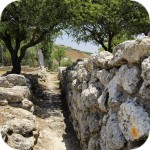
Most of the people who were in Crete heard of the great Minoan palaces, and a significant part certainly visited even Knossos. However, in addition to the famous grand palaces on the island in the Minoan period, a number of smaller residences were created. One of the most important examples is the Vathipetro discovered about 5 km north of Archanes, on the southeastern slope of Mount Juchtas in the central part of Crete.
Redirected from the site - Káto Zákros (Ζάκρος). Zakros is the fourth-largest Minoan palace in Crete in importance and size. This latest found, built on the east coast of the island is located in the village of Káto Zákros. Rocky mountains surround the ruins of the palace complex with the remains of a once thriving city, built on a fairly hard-to-reach and inhabited area. Paradoxically, Zakros, being several centuries ago, a city with extensive contacts with other countries, was (and is actually still) the most isolated Minoan center on the island.
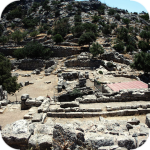
The ruins of the ancient city of LATO can be found near the charming village of Krista near Agios Nikolaos. This is one of my favorite excavations in Crete. Located on the sidelines, without crowds of crowds, exposed to the burning sun, which heats mercilessly the stone remains of the city. The atmosphere of isolation is conducive to such sightseeing that I prefer the most. It leaves room for both reverie over the former inhabitants of this place and a picturesque photographic plein-air without tourists entering the lens.
Komentarze
komentarz z
Cudowne miejsce! Warto przejść 10 km w jedną stronę dla takiego widoku! ❤
komentarz z
Skąd szłaś?
komentarz z
CRETE - Kreta z Kissamos :)
komentarz z
Aleksandra ciężko było wejść ale widok zrekompensował trud :D
komentarz z
Tam nie bylismy
komentarz z
Trzeba będzie nadrobić zaległości w sprzyjających okolicznościach.
komentarz z
CRETE - Kreta koniecznie
Wypełnij poniższy formularz aby dodać komentarz
lub kliknij w poniższy link aby skorzystać z możliwosci komentowania przez facebooka:
https://www.facebook.com/crete.poland/posts/10156905092822551